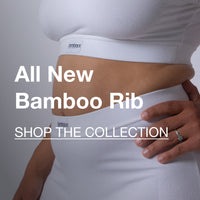The Ultimate Guide to Sustainable Fashion

Fashion trends are ever-changing, but what stays the same are the lasting effects that our clothing choices have on the environment. As fashion lovers, we can use our buying power to embrace sustainable, eco-friendly styles that are good for the planet and for our closets.
In this article, we're diving into the exciting world of sustainable fashion to explore the many different options available to us. We'll also discuss the various ways we can be more conscious of our fashion choices, from finding eco-friendly materials to shopping second-hand.
So tie up your shoelaces and join us on our journey as we explore the future of fashion and what it means to be a sustainable fashionista!
Here's What You Need to Know About Sustainable Fashion
Sustainable fashion — aka eco-fashion — is a growing trend in the apparel industry as more and more people become aware of their environmental impact. By shopping for clothing that is ethically produced, responsibly sourced, and manufactured with sustainable materials, we can work towards being carbon neutral and fighting climate change while still looking stylish.
Here are some of the key benefits of sustainable fashion:
Benefit #1: Reduced Carbon Footprint From Sustainable Practices
The fashion industry has a large environmental impact due to its reliance on petroleum-based fabrics and non-renewable resources. Sustainable fashion reduces this impact by using renewable materials such as hemp, which require much less energy to produce than traditional fabrics. Many companies are now using organic cotton, which doesn't require toxic pesticides or fertilizers to be grown, further reducing their carbon footprint.
Benefit #2: Ethical Fashion That Supports Garment Workers in Local Communities
Sustainable fashion often involves shopping from small businesses or artisans in developing countries who use their skills to craft unique pieces of clothing from recycled or sustainable materials. The workers at all stages of the sustainable clothing supply chain are also paid fair wages.
When you shop from these communities, you are helping to provide them with a living wage and enabling them to stay in their homes rather than transporting them to cities for work. It was important for us to earn our B Corp certification so that we could ensure that everyone who makes our apparel is treated with the dignity and respect they deserve.
Benefit #3: Longer Lifespan of Your Clothes
Sustainable fashion is often made from higher-quality materials that last longer than conventional fabrics. This means that you don't have to replace your clothes as often, which saves you money in the long run and helps reduce the amount of waste created by discarded clothing items.
Additionally, many sustainable brands offer repair services so that you can keep wearing your favorite pieces for longer periods without having to purchase new clothing each season.
Benefit #4: Higher Quality Clothing
Since sustainable fashion brands invest more time and effort into crafting high-quality items, they tend to be better made than mass-produced pieces found at fast fashion retailers. This means that it not only has a longer lifecycle but it's also likely to look better since it won't quickly start fading or fraying after several washes like cheaper items do.
Benefit #5: Promote Transparency
Many sustainable brands make an effort to be transparent about where they source their raw materials from and how they manufacture their products. Such transparency allows customers to make informed decisions about what they buy based on facts rather than marketing claims alone.
This transparency and trust can help build trust between consumers and brands while ensuring that human rights are being respected throughout the production process, as well as guaranteeing safe working conditions for employees involved in making the garments we wear every day.
Benefit #6: Animal Welfare
Animal cruelty has been an issue throughout history concerning the production of materials such as fur or leather. In response, sustainable fashion encourages alternatives such as faux fur or vegan leather.
This means that animals aren't harmed or killed for their skin/fur, but rather manmade materials are made using eco-friendly processes instead. (Not all faux leather is environmentally-friendly — the process has to be just right). This ensures animal welfare is taken seriously while also helping people stay warm.
What Are the Different Types of Sustainable Fabrics?
Sustainable fabrics are materials that are produced and sourced with the environment in mind. They are made from natural or recycled materials, require fewer resources to create, and/or are biodegradable or recyclable. For example, our Eco Fleece Hoodie is made from a combo of organic cotton and recycled polyester fleece.
As more people become aware of the environmental impact of their clothing choices, sustainable fabrics offer an eco-friendly alternative to traditional fabric production methods.
With this in mind, here is a list of some of the most popular types of sustainable fabrics to look for:
Hemp: A Natural Material Used in Slow Fashion
Hemp is one of the oldest plant-based fibers used for clothing. It is extremely strong and durable yet lightweight, making it a popular choice for eco-friendly fashion. Hemp requires little water to grow and naturally resists pests, eliminating the need for harsh chemical treatments. In addition, hemp fabric is breathable and UV-resistant while still being soft against the skin.
Organic Cotton: A Staple for Sustainable Fashion Companies
Organic cotton is grown without the use of pesticides and other potentially hazardous chemicals that can seep into groundwater sources near conventional cotton fields. This makes organic cotton safer for workers and the environment as it eliminates toxic pollutants in the air and soil.
What's more, organic cotton uses significantly less water than conventional cotton farming due to its natural pest resistance abilities. Check for the OEKO-Tex certification (like the one we have at TomboyX) to ensure the cotton is gentle on our skin and the environment.
Linen: A Tried and True Classic
Linen is another natural fabric with a long history in textile production, having been used for centuries by many cultures around the world. It's considered extremely sustainable as it requires fewer resources than many other fabrics during production and will biodegrade within weeks as opposed to hundreds of years, as most synthetic materials do.
Plus, linen is both durable and lightweight, making it perfect for warm-weather wear or for those looking for something chic yet eco-friendly at the same time.
TENCEL™ Modal: Made Without the Use of Fossil Fuels
TENCEL™ Modal is a type of rayon fiber that's derived from wood pulp using non-toxic solvents. Here, wood pulp replaces harsh chemicals like petroleum products, which are commonly found in some rayon production techniques.
This makes it incredibly soft yet durable enough for everyday wear while still remaining gentle on fragile ecosystems by reducing greenhouse gas emissions from production processes. And like hemp, TENCEL™ Modal fibers require very little energy to produce, resulting in lower carbon dioxide emissions during manufacture compared to other fabrics like polyester or nylon.
For deliciously soft underwear that’s also eco-friendly, check out our TENCEL™ Modal collection. Made from sustainable beechwood — it’s twice as soft as cotton, temperature regulating, and certified biodegradable.
Recycled Polyester: Upcycled Fashion in a Nutshell
Recycled polyester is made from plastic bottles that have been melted down into pellets before being spun into yarns, just like regular polyester yarns would be produced; however, this process requires fewer resources than traditional production methods.
Plus, no additional chemicals or synthetic dyes are required, which means recycled polyester has a much lower carbon footprint compared to other synthetic fabrics out there.
Sustainable Solutions for Shopping
Shopping for sustainable clothes can seem daunting, but it doesn’t have to be! If you want to reduce your environmental footprint while looking super fresh, here are some tips to help make the process simpler:
Tip #1: Shop Pre-Loved Items To Combat Overproduction
One of the most sustainable ways to shop for clothing is to buy second-hand pieces from consignment stores. These shops typically feature gently used items that have been donated or traded in by their former owners.
The great thing about shopping pre-loved is that you can find incredible deals on designer labels and vintage t-shirts and pants, all while keeping them out of landfills!
Tip #2: Buy From Brands That Prioritize Sustainability and Circular Fashion
To ensure you’re buying something actually made with environmental considerations in mind, look for certifications from organizations like the Fair Labor Association, B corp, or Oeko-TEX. These certifications verify that social and ecological standards are being met throughout production.
Additionally, research companies to learn about their sustainability practices concerning labor conditions, water usage, carbon footprints, etc., so you can decide if they align with your values before making a purchase.
Tip #3: Read Eco-Labels
It’s important to know what materials are used when shopping for clothing. Generally, fibers like organic cotton, linen, hemp, TENCEL™ Modal, and wool require less water and energy during production than synthetic fibers.
If a garment’s label isn’t clear about its origin, check the product description or contact the manufacturer directly to find out more information before making a purchase.
A Final Word
When we hear the phrase "sustainable fashion," we typically think of it as an oxymoron. However, sustainability and fashion are compatible — it just takes a little bit of knowledge and effort to make our fashion choices more environmentally friendly.
By switching even a few pieces of clothing over to sustainable options, such as our unbelievably soft TENCEL™ Modal and OEKO-Tex certified cotton, we can all contribute towards protecting our planet. At TomboyX, we’re proud to provide fashionable looks that both look great and feel good when worn — it’s just one part of our sustainability story.
Sources:
What is Sustainable Fashion? | REDRESS RALEIGH
ABOUT B CORP CERTIFICATION | B Lab Global Site
Testing of Organic Cotton in OEKO-TEX® STANDARD 100 | OEKO-Tex





